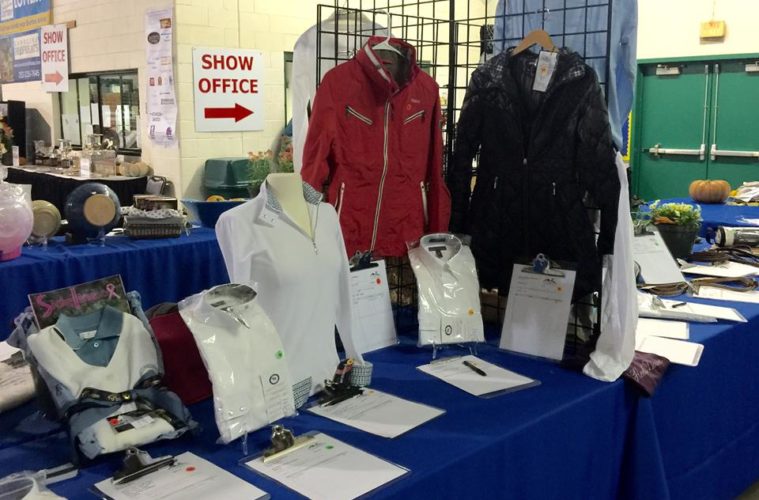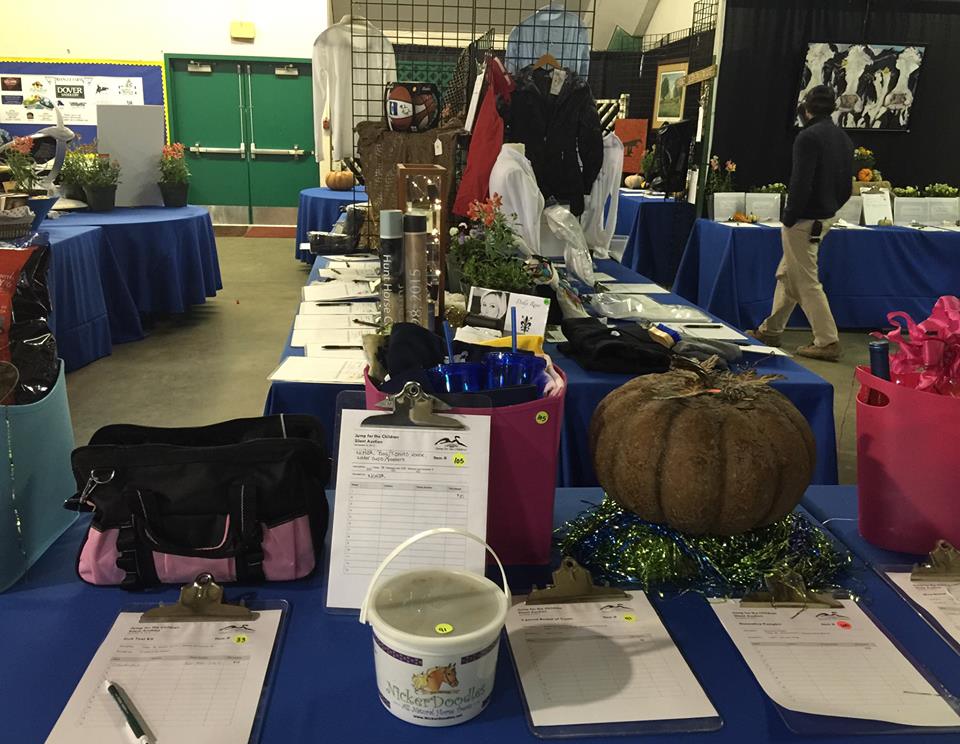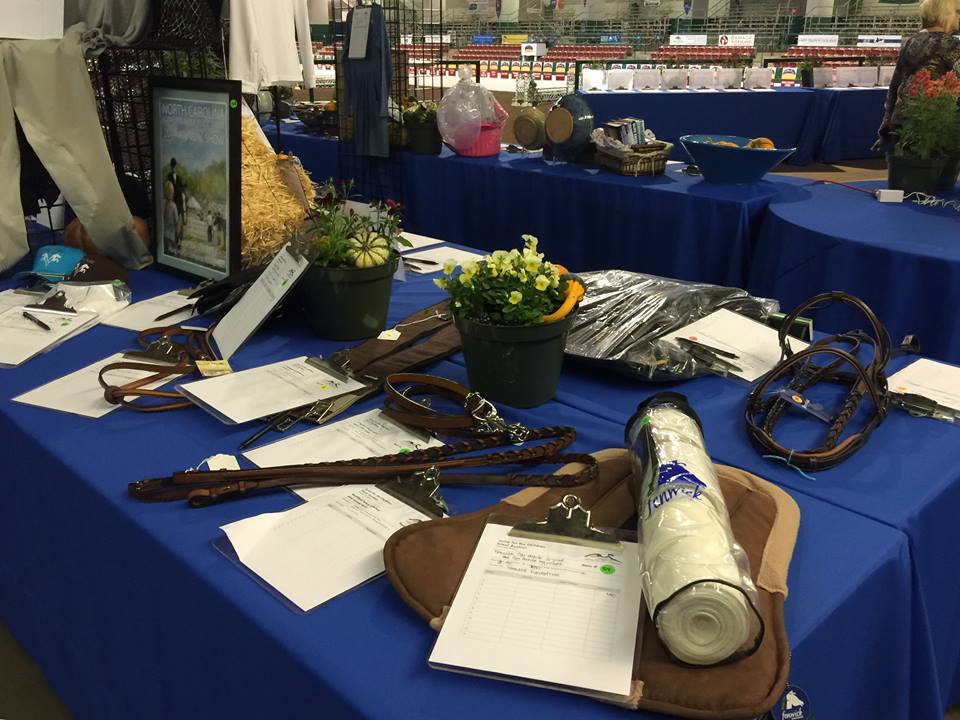Its that time of year again – the leaves are changing, the air is crisp, the horses have started acting foolish and growing hair, and, of course, I have started pulling my hair out because I put on my Silent Auction Chairman’s hat full-time. To be fair, I’ve really been working on the auction most of the year, but the real nitty-gritty has to be done closer to the show. In order to hold a successful silent auction during a benefit horse show, you need a few ingredients – dedicated volunteers, good connections, a good location and supportive management, a great cause, and a willingness to do a lot of work.
Dedicated volunteers are important both before, during, and after the event. Ideally, you staff a committee with a Chair, co-Chair, and several people who can help network for items and staff the auction itself during the show. However, sometimes this is not possible, and when this happens, it is absolutely critical that the Chairman works with the rest of the Show Board and Show Manager to ensure that they are all working to procure items for the auction. Volunteers are also important during the show to help answer questions, accept and catalog last-minute donations, and monitor the auction for security purposes.
In part two of this series, I will discuss in depth how to go about making connections to maximize your donations. The bottom line is to think outside the box. You will most likely have bidders who are not “horsey” and it is a good idea to offer a wide array of items to suit all comers. More on this later!
Location, location, location! Location is very important and you must consider traffic patterns during the show. You must also consider how many items you will have, how many tables you will need for the items, fire codes, and plan your layout accordingly. An ideal location is one that offers the most traffic and largest space possible, while allowing you to create an aesthetically pleasing set-up. Do you need to have lighting? If so, then you will need to run extension cords, and manage the traffic flow to avoid tripping hazards.
Possible locations might be near the show office, close to vendors, or near to the hospitality areas. Work with show management to try out your set-up well before the start of the show to avoid any conflicts. For example, you won’t want to move tables while horses are schooling nearby, if you are setting up indoors or near a ring. You’ll also want to work out any fire code issues well in advance – traffic has to be able to flow appropriately to the exits.
Never underestimate the value of a great cause. To be sure, all causes are worthy – but it seems like there are causes that really tug at the heartstrings and, if you are fortunate enough to hold an event to benefit one of those, be grateful! Use your cause and the great work that will be done with the funds you raise in all of your marketing and outreach. Every single contact you make should be told what you do, how you do it, why you do it, how much you have raised so far, and your goal for this year.
Great photos are a huge plus. Statistics are very helpful – tell your prospects how many kids can be helped with a certain amount raised, for example. Tell them that so many dogs can be fed if you raise this much during the show. Are you raising money to build a new school? Tell them that! Whatever the cause – get the word out there. The cause will sell itself if you tell your story.
Be prepared to work hard. Start early. Many companies budget early in the year for their philanthropic giving. Know that the closer you get to the show date, the more hours you will need to dedicate to your auction. There are forms that can be done in advance, and the more you can do ahead of time, the better. Consider using an online bidding system versus the traditional paper giving. I could write a whole other piece on those options (and perhaps I will!)
Plan to be available during the auction itself as much as possible. Depending upon the size of your auction, it will take a considerable amount of time, and you will want help. Assign each item a number so you can track it in your system. Make sure you can tell who has donated what, so that you can send thank you notes. Above all, enjoy it, have fun, and remember why you got involved – for the cause!
Stacy Bromley Cheetham, MPA grew up riding horses. She currently resides in Raleigh, NC with her boyfriend, her two rescue Pomeranians, an ornery calico cat, and is working with a promising young OTTB, Indelible (Hanna No Sir) who came from the Track to Tranquility race rehoming program. She is fundraiser and is the Silent Auction Chair for Duke Jump for the Children, an AA rated horse show benefiting Duke Children’s Hospital. In her free time she freelances for several blogs and publications, including her own, The Vegetarian Equestrian.



